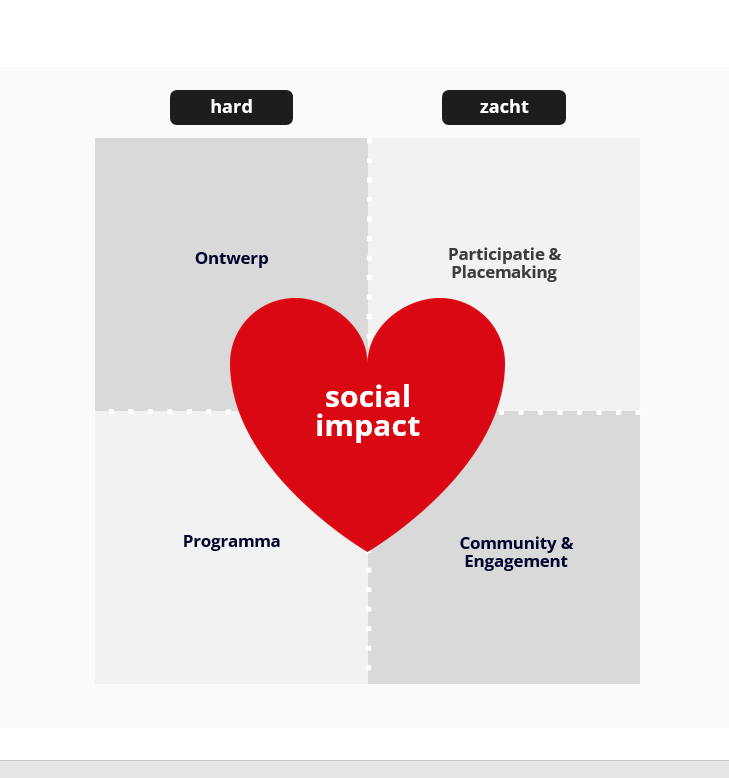Create social impact
We focus on all members of society—individuals with diverse interests, each with their own dreams. As placemakers, we create space for well-being and happiness: at home, at work, while shopping, or relaxing. A beautiful, secure environment with homes for every budget. And appealing gathering spaces where a community thrives because everyone feels welcome.
The living environment has a significant impact on the well-being of residents. That’s why we find it important to explicitly focus on this, for both current and future generations. We call this Social Impact. But how can we create, maintain, and ensure this social impact?
AM has developed an integrated approach for this: Create Social Impact.
This approach involves both a ‘physical’ and ‘soft’ approach. The physical approach includes tangible interventions that contribute to well-being: building sustainable homes, appropriate infrastructure, and the right facilities such as meeting places. The soft approach concerns the effect of our physical interventions. We achieve this by engaging with residents or users of the area and devising ways to connect them with each other.

The design
We have examined the spatial conditions for social cohesion at both the building and area levels. In doing so, we scrutinized our own area developments. The insights from this research have been translated into design principles for all our projects. This way, with the right design, we can contribute to social cohesion and interaction at both the building and area levels. Of course, the application varies for each area development.
Program
We have insight into which residential and amenity programs create social impact. Affordable housing is becoming increasingly important.
In every area development, creating the right mix in a neighborhood and ensuring a good place for vulnerable groups remains a challenging puzzle. Our concepts such as Stadsveteraan and Let’s Live are important pieces to create an attractive neighborhood. Additionally, we look at the right mix of social, collective, and commercial facilities.
Participation & Placemaking
For shaping pleasant residential and living environments, we involve the current and future users of an area (participation). Central to our approach is the collaborative building of a clear area identity: the DNA.
This ensures that, at an early stage, we have substantively strong plan concepts created in co-creation. We define placemaking as organizing events and initiating temporary use. Ideally, temporary use becomes part of the new neighborhood. Through placemaking, we engage with various stakeholders throughout the development and realization period. This keeps the area development relevant, and we involve the right target groups in participation. Everything we do—whether it’s participation or placemaking—contributes to the development of a community. We ensure that we provide social and societal value to a place, ultimately resulting in more economic value, long before realization.
Communication & Engagement
In everything we do, we rely on the strength of the people who use the area. In some projects, we assist them in building a community, while in others, we aim to strengthen and preserve existing communities for the long term. For each area development, we explore various means, such as establishing a legal form for the management of public spaces, developing a neighborhood app, or involving local residents and parties.
Focus: Affordable Housing
The housing market is highly dynamic. In recent years, house prices have risen significantly, while many people are looking for affordable housing. Anyone delving into the housing market can see a significant discrepancy between supply and demand. Developing feasible and affordable homes is a key focus for AM